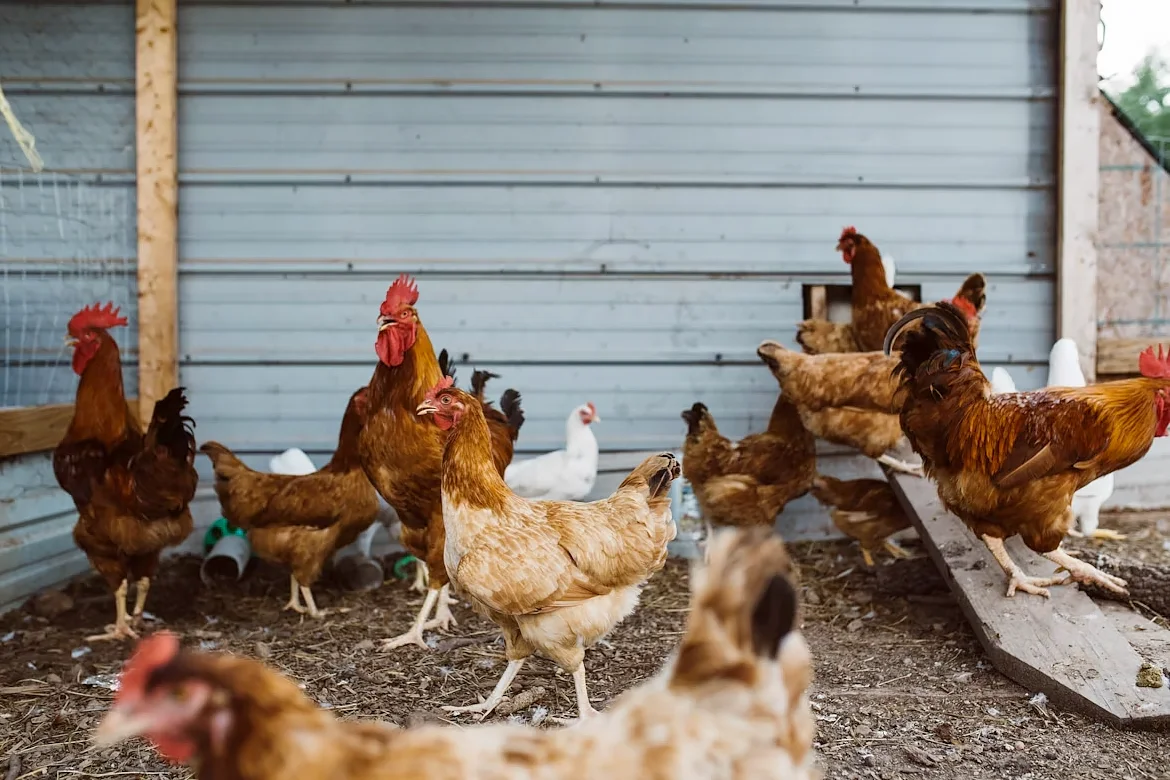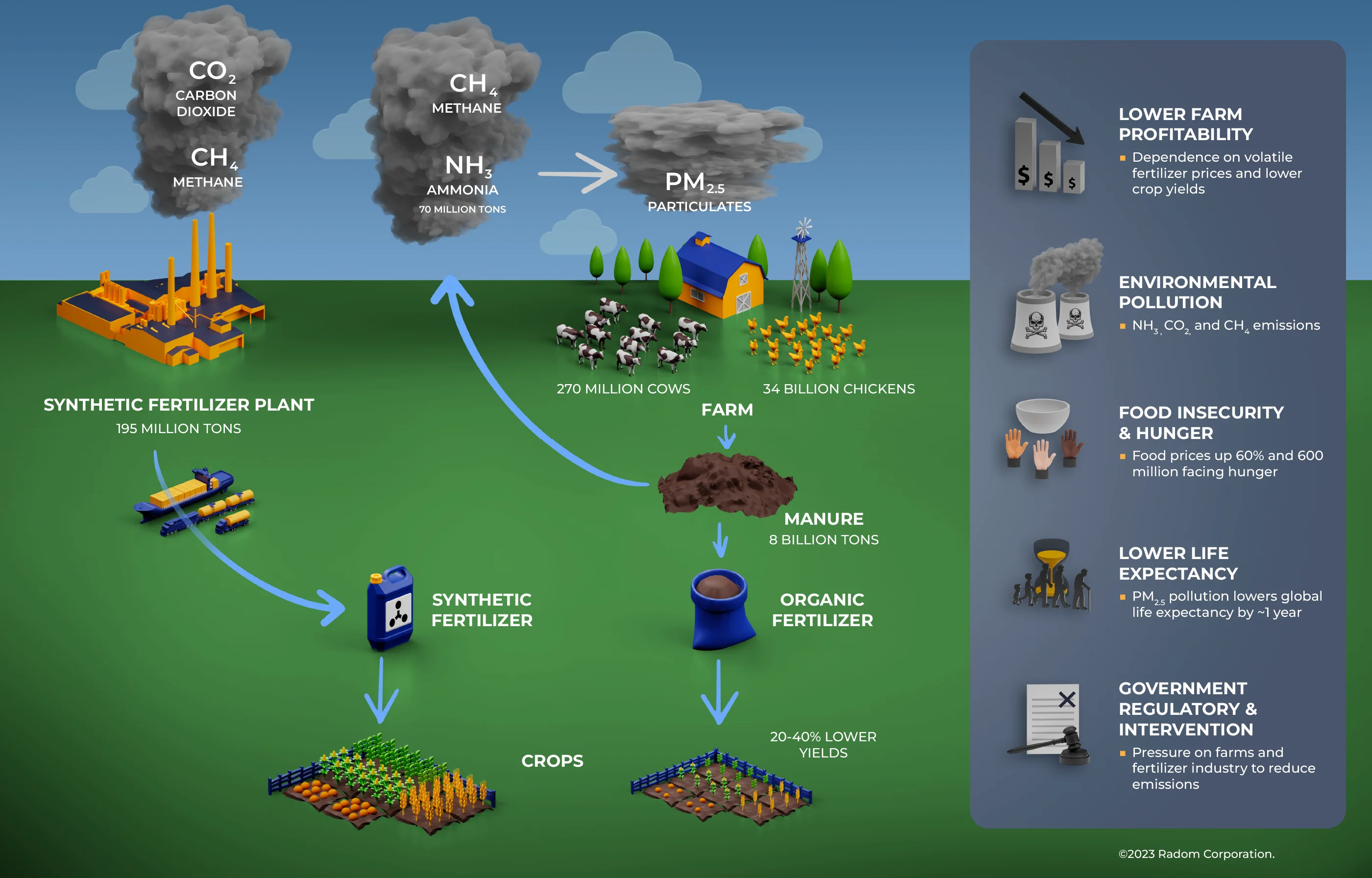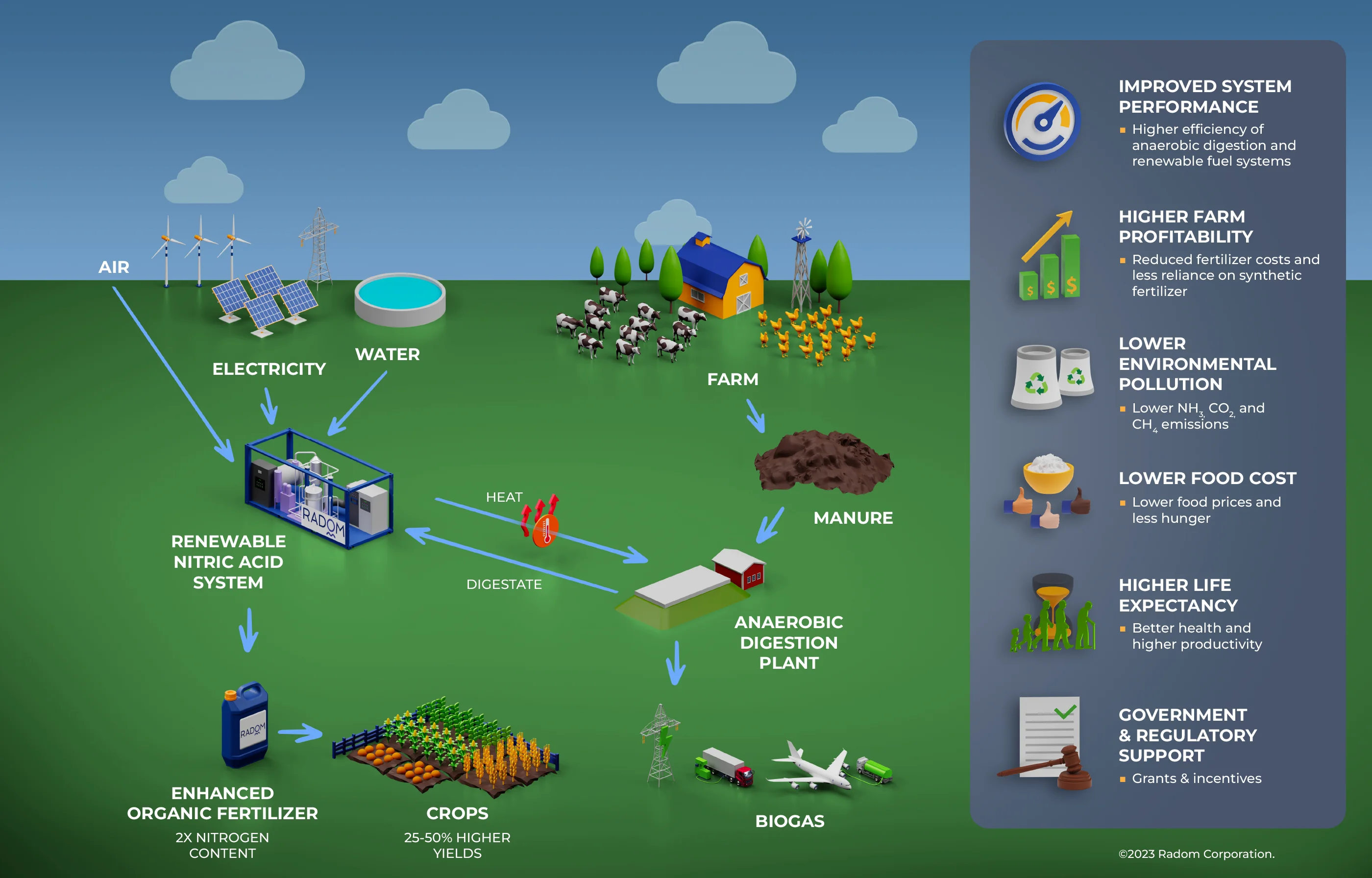Nitrogen Fixation
Plasma nitrification uses high-energy plasma to fix atmospheric nitrogen into reactive nitrogen species, enabling localized nitric acid or nitrate production for on-site fertilizer.

The Problem We are Facing Today
Agriculture fertilizer production emit milion tons of greenhouse gases, such as CO2, Methane and Ammonia gas, which also contribute to poor air quality in agricultural communities. Fertilizer is produced in large, centralized plants where its price fluctuates with global fuel costs, resulting in food price instability. Organic alternatives are typically less effective, and the processing and transport of the animal waste also result in fine particulate pollution.
Modular Plasma Based Fertilizer Production
Unit Plasma fertilizer production systems installed at farms can generate fertilizer on demand by converting atmospheric nitrogen into nitric acid. Mixing nitric acid with manure not only captures additional nitrogen, but it prevents ammonia gas emissions.
Plasma Add-On to Biodigester
By pairing an anaerobic digester plant, which produce biogas, with a Plasma fertilizer production system, the heat from the plasma process can be recycled back into the digester. At the same time, the plasma unit generates nitrogen-enriched fertilizer and recycles water on the farm. Want to learn more about the benefits of this solution? Open the diagram below, which highlights them in detail.
Technology
Our nitrogen fixation technology is built on Cerawave™ microwave plasma torches, which replace conventional copper inductors with high-purity ceramic rings to achieve exceptional efficiency and durability. Operating at 915 MHz with 100 kW magnetrons, the torches generate stable, near-atmospheric plasma, enabling the direct conversion of nitrogen and oxygen into nitric oxide and ultimately nitric acid. This closed-loop system consumes only air, water, a small amount of argon, and electricity-eliminating the need for high-pressure, catalyst-driven methods like Haber-Bosch and Ostwald. By coupling high plasma efficiency with integrated heat recovery, the platform not only produces nitric acid for fertilizer applications but also supplies usable process heat, creating a scalable, sustainable alternative to conventional fertilizer production.
How It Works?
01
Radom plasma makes nitric acid from air, water, and electricity on the farm.
02
Nitric acid and ammonia are combined to make fertilizer.
03
Heat from the plasma torch is recycled to release ammonia from liquid digestate.
04
Clean water is recycled back to the digester.
Benefits
Reduced Emissions & Costs
Reduced emissions, transportation costs, and fertilizer price fluctuations.
Water Reuse & Lower Emissions
Water is reused and ammonia greenhouse emissions are eliminated, heat from plasma is reused.
Organic Fertilizer Revenue
Organic nitrogen-rich fertilizer becomes a source of revenue.
Anaerobic Digesters Enabled
Makes anaerobic digesters in poultry farms possible and economical.
From Vision to Reality
Now that we’ve explored the problem, the plasma solution, how it works, and the benefits—it’s time to see how it all converges. We don’t do “black box.” Our white box is a clear, modular system that openly shows how plasma, chemistry, and circular design work together on farm. This featured unit is a 10 kW system designed for on-farm deployment.
Think of this moment as a funnel: emissions reduction, water reuse, organic fertilizer revenue, and digester enablement-all flowing into one compact unit you can place in the field.

Contact Us
Ready to explore how high-power microwave plasma can revolutionize your operations? Connect with our experts. We're here to understand your unique B2B challenges and provide tailored, powerful solutions.





